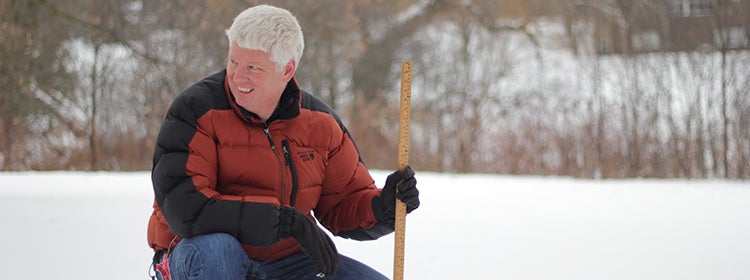
Geography and Environmental Management (GEM) professor and co-investigator on Transformative sensor Technologies and Smart Watersheds, Richard Kelly, has done something that seems nearly impossible in the middle of a brutal winter; he’s helped regular citizens all over the world get excited about snow. In return, they’ve helped him carve out a niche as a leader in academic social media and citizen science with his #snowtweets project.
Kelly’s #snowtweets initiative asks participants across the globe to track snowfall (or lack thereof) in their backyards and communities, and tweet that information back using the project’s eponymous hashtag. The hope is that having real-time reporting of snow coverage at the micro level can augment and provide detail to large-scale remote sensing of snow cover already in place.
The idea is really an exploration. It’s not so much a scientific hypothesis. It’s more like an exploration of how can we use alternative sources of data to help with the science. You need more – you need as much data on the ground as you possibly can to test out what we already see from space.
Kelly notes that one of the challenges of monitoring snow is that snow gradually evolves as temperatures change. Matching what is actually happening on the ground with what they see from space can help scientists better understand their space-based estimates.
Collecting that more precise snow data may seem like tracking an annoyance, but this information can have a significant impact on the economy, our health and local policy.
You are talking about agriculture, water resources and water supply – not just potable water for consumption. You are also talking about agricultural irrigation and industrial manufacturing processes, as well as hydro power provision, and of course flooding hazards.